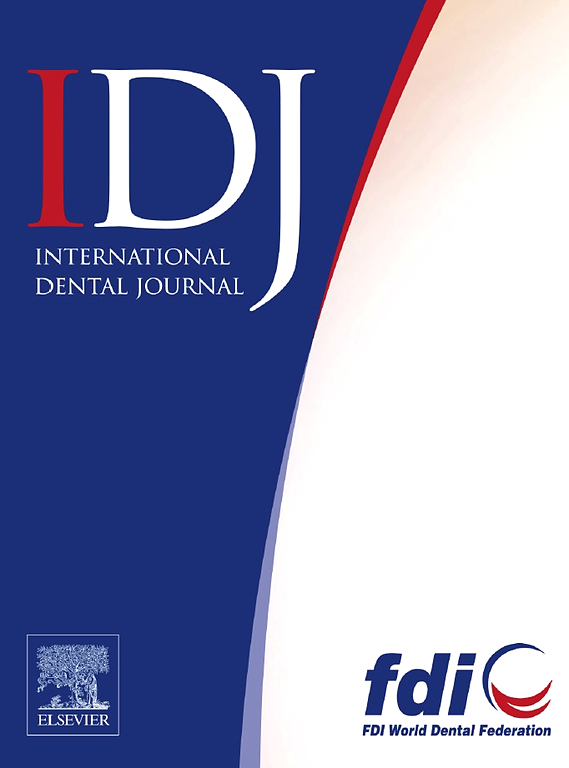Analysis of Adverse Events Associated With Dental Local Anaesthetics Using Food and Drug Administration Adverse Event Reporting System Data
IF 3.2
3区 医学
Q1 DENTISTRY, ORAL SURGERY & MEDICINE
引用次数: 0
Abstract
Objective
Local anaesthetics (LAs), almost indispensable aspect of dental practice for pain-free procedures, occasionally leads to worrisome adverse events (AEs). We aimed to compare serious and nonserious AEs of LAs for dental reasons in the US Food and Drug Administration AE Reporting System.
Methods
We retrospectively analysed dental AE reports associated with LAs in the Food and Drug Administration AE Reporting System database from its inception to April 2024. We described AEs by patients’ demographic and clinical characteristics and compared ester and amide LA-associated AEs by their severity.
Results
We identified 1956 dental cases with a significant increase of AE reports after 2017. Lidocaine and articaine were the most commonly reported LAs (40.4% and 39.2%, respectively). Serious AEs constituted 46.2%, more commonly in females than males (56.6% vs 43.4%, P < .001) and in those on concomitant medications (70.2% vs 42.2, P < .001). These were also significantly higher in epinephrine-containing LAs (70.1%) than that without (34.2%, P < .01). Ester LAs had increased risk of serious AEs (odds ratios [OR]: 3.86; 95% confidence intervals [CI]: 2.77-5.39), particularly as hospitalization, life-threatening event, or death. The odds of serious AEs were lower with lidocaine (OR: 0.59; 95% CI: 0.48-0.71) and articaine (OR: 0.63; 95% CI: 0.52-0.76).
Conclusion
Our study showed higher rate of serious AEs with ester LAs and those with vasoconstrictor-added practices. Besides, serious outcomes appear as more likely in females and those where additional drug use was reported.
Clinical Relevance
The integration of clinical evidence with pharmacovigilance data has the potential to influence clinicians’ LA preferences in dental practice, enabling more informed and evidence-based decision-making.
使用美国食品药品监督管理局不良事件报告系统数据分析与牙科局部麻醉剂相关的不良事件
目的:局部麻醉(LAs)几乎是牙科无痛手术中不可或缺的一部分,但有时会导致令人担忧的不良事件(ae)。我们的目的是比较美国食品和药物管理局AE报告系统中因牙齿原因发生的严重AE和非严重AE。方法回顾性分析美国食品药品监督管理局AE报告系统数据库中自建立至2024年4月与LAs相关的牙科AE报告。我们根据患者的人口学和临床特征来描述ae,并比较了酯类和酰胺类la相关ae的严重程度。结果我们确定了1956例口腔病例,2017年后AE报告显著增加。利多卡因和阿替卡因是最常见的LAs(分别为40.4%和39.2%)。严重ae占46.2%,女性多于男性(56.6% vs 43.4%);.001)和联合用药组(70.2% vs 42.2%, P <;措施)。含肾上腺素的LAs(70.1%)也显著高于不含肾上腺素的LAs(34.2%)。. 01)。Ester LAs增加了严重ae的风险(优势比[OR]: 3.86;95%置信区间[CI]: 2.77-5.39),特别是住院、危及生命的事件或死亡。利多卡因组发生严重ae的几率较低(OR: 0.59;95% CI: 0.48-0.71)和阿替卡因(OR: 0.63;95% ci: 0.52-0.76)。结论使用酯类LAs的严重ae发生率高于使用血管收缩剂的ae发生率。此外,严重的后果似乎更有可能发生在女性和那些报告有额外药物使用的人身上。临床相关性临床证据与药物警戒数据的整合有可能影响临床医生在牙科实践中的LA偏好,从而实现更明智和基于证据的决策。
本文章由计算机程序翻译,如有差异,请以英文原文为准。
求助全文
约1分钟内获得全文
求助全文
来源期刊

International dental journal
医学-牙科与口腔外科
CiteScore
4.80
自引率
6.10%
发文量
159
审稿时长
63 days
期刊介绍:
The International Dental Journal features peer-reviewed, scientific articles relevant to international oral health issues, as well as practical, informative articles aimed at clinicians.
 求助内容:
求助内容: 应助结果提醒方式:
应助结果提醒方式:


